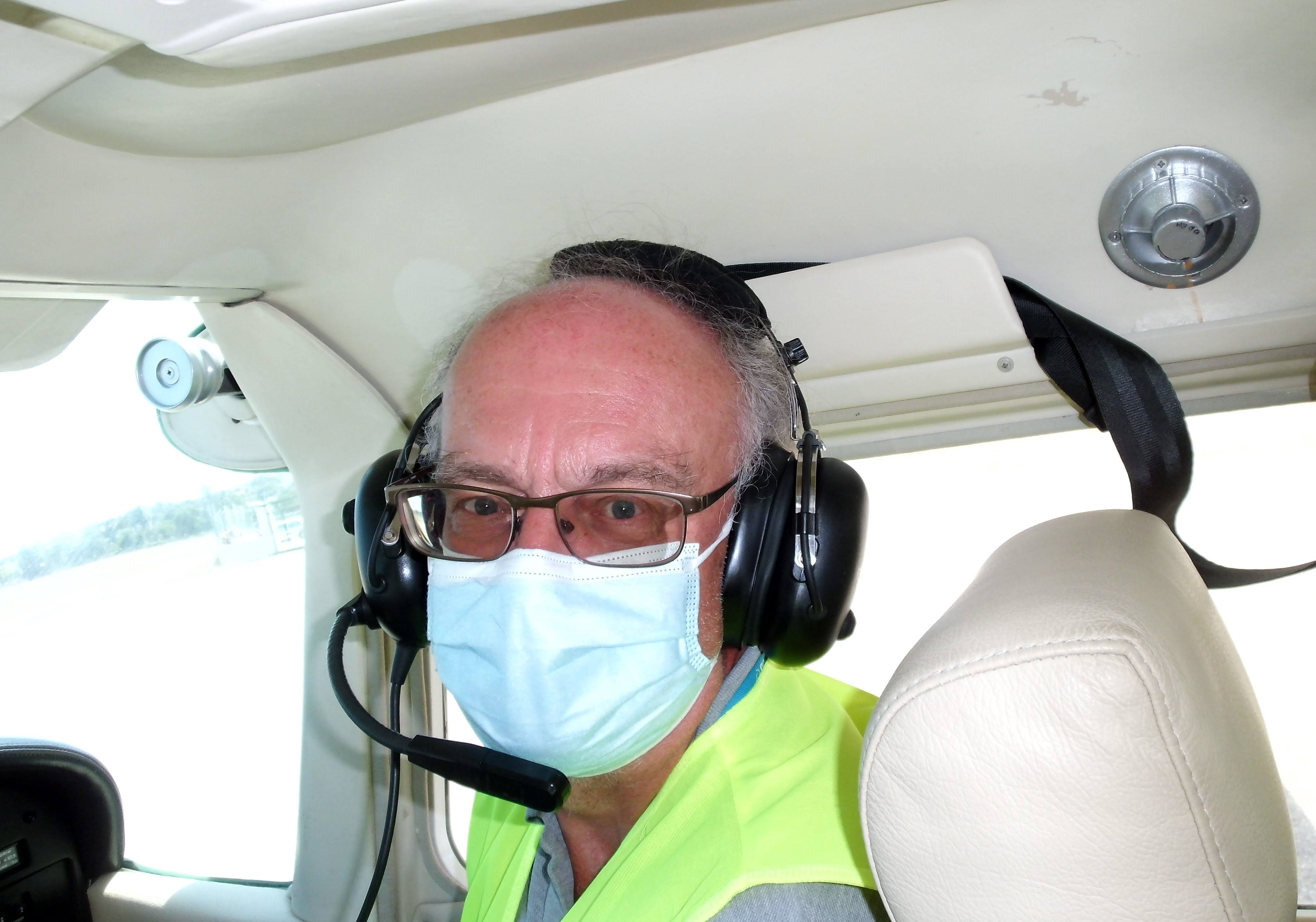The Aviators |
|
Capt Franklyn Leslie Barnard OBE AFC |
||
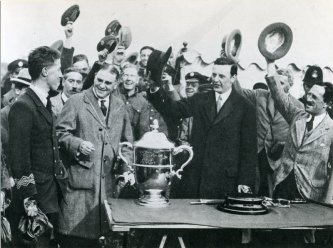 |
||
|
Winner of the first King's Cup in 1922. "an exceptional pilot - careful, skilful, and daring" and "his ability as an engineer was fully equal to his skill as a pilot". b. 1896; his father, Owen Barnard, was a stockbroker's clerk (and not related to Charles Barnard's father). AFC in WWI; chief pilot for Instone (later) Imperial Airways. OBE in 1927. Killed in July 1927 while testing propellers for the Bristol Badminton which he had entered for the King's Cup Race, which crashed at Filton after the engine seized. Major Beaumont, appearing for Imperial Airways at the inquest, said the company felt it had "lost one of the world's magnificent airmen". 1927 It is with profound regret that we have to record the death, as the result of a flying accident on Thursday, July 28, of Capt. F. L. Barnard. Capt. Barnard—one of our mostexperienced and popular pilots—was carrying out a test flight on the Bristol " Badminton " ("Jupiter VI ") biplane, which had been entered for the King's Cup Air Race, at Filton aerodrome, when, according to eyewitnesses, the engine suddenly stopped and the machine crashed to the ground just outside the 'drome from a height of about 200 ft. When a number of people who had been watching the flight arrived in the field where the machine had crashed, the latter was found completely wrecked, with the engine embedded in the ground, and the unfortunate pilot lying in the cockpit beyond human aid. From evidence at the inquest, which was held on July 29, it appears that when Capt. Barnard's engine failed, he put the machine into normal gliding angle and attempted to land. While manoeuvring to do so, the machine lost flying speed and stalled from about 80 ft. Capt. Barnard had already made three other test flights on the machine, trying out different airscrews. Capt. Barnard's loss to the aviation world is a great one indeed, for he was an exceptional pilot, careful, skilful, and daring—but daring only when flying alone or testing. He served in the Air Force during the war, and was awarded the Air Force Cross. Following the Armistice he was pilot to No. 24 Communication Squadron, when he carried many distinguished personages to and from the Continent. He then became associated with Instone Air Lines, and later, when Imperial Airways was formed, was their chief pilot. His skill as a pilot was such that he was entrusted with many important aerial missions—the most conspicuous of which was the piloting of the Imperial Airways D.H. "Hercules" air liner, carrying Sir Samuel Hoare, Lady Maud Hoare and party from London to Cairo on the inaugural flight of the Egypt-India service. He also, it will be remembered, took part in previous King's Cup races, being the winner in1922 and 1925, and flying last year the Bristol " Badminton "in its original form. Capt. Barnard leaves a widow and young son, to whom, in common with his many, many friends, we offer our deepest sympathy." - 'Flight' |
|
Sqn-Ldr (Sir) Christopher Joseph Quintin Brand KBE, DSO, MC, DFC
|
||
|
Born in Beaconsfield, in the 'Cape Colony'. WWI Ace (16 victories). Knighted in 1920 after (more or less) flying to Cape Town in the Times' Silver Queen. Principal Technical Officer at RAE Farnborough 1925-7; played a vital role in the Battle of Britain in charge of No 10 (Fighter) Group. Later an Air-Vice-Marshall; died in 1968. |
|
Capt Hubert Stanford Broad MBE AFC
|
||
|
b. 18 (or 20) May 1897 shot through the neck in WWI by one of Richtofen's Red Circus pilots; [c.f. Angus Irwin]; second in Schneider 1925, to Jimmy Doolittle. In 1928, he spent possibly the most boring 24 hours of his life by beating 'all existing figures' for long endurance flights in light aeroplanes (unfortunately there was no official 'record' to beat as such, the FAI not recognising such things). His log makes, um, rivetting reading: --0--0--0--0--0--0--0--0--0--0-- 5:30pm: Hendon 7:40pm: Gloucester 8:30pm: Coffee and sandwiches 11pm: Over Central London, 3,000ft; watched theatre crowds leaving Midnight to dawn: Remained over Edgeware 2:30am: second meal 4:10am: First signs of dawn 5:10am: Biggin Hill. Saw night bomber in air ... Noon: Stamford. Very sleepy 4:30pm: Ipswich --0--0--0--0--0--0--0--0--0--0-- Having trimmed the controls, Hubert settled down and read 3 complete novels 'to relieve the boredom'. When he finally landed, he he said that he was very stiff with cramp, and promptly went home to sleep. His Moth still had 12 gallons of fuel, so it could have kept going for another 4 1/2 hours... He was named as co-respondent in Beryl Markham's divorce in 1939. de Havillands test pilot until 1935 (Bob Waight succeeded him) - broke the world's speed and height records for light aircraft in the original monoplane Tiger Moth, then joined RAE Farnborough; Hawker test pilot post-WWII; died 1975 FLIGHT MARCH 28TH, 1946 No. 2. CAPT. H. S. BROAD, Senior Production Test Pilot, Hawker Aircraft Co. FOR sheer wealth of flying experience it is doubtful whether there is another pilot in the world to equal Hubert Broad. He has flown everything from diminutive single-seaters to multi-engined--bombers, and including a number of out-and-out racing aircraft. His logbooks, of which he has filled some nine or ten, total over7,500 hours' flying time and 182 separate types. These are honest types—not modifications or different mark numbers of the same aircraft. Many of these he has also flown as seaplanes. Broad, at the age of nineteen, learnt to fly at the Hall School of Flying at Hendon in 1915. The aircraft on which he made his first flight (there was no dual, a pupil did straights across the airfield until he felt it was safe to do a circuit)was the single-seater Caudron with35 h.p. Y-type Anzani engine. Believe it or not, with this tiny horsepower the Caudron occasionally was made to stagger into the air with two people on board, but the passenger had to sit on the wing by the side of the nacelle. Early Days The end of 1915 found Broad in the R.N.A.S. at Eastchurch, and he was on the very first course at Cranwell, which was then a R.N.A.S. establishment rejoicing in the name of H.M.S. Daedalus. His first tour of duty at the front was with No. 3 Squadron at Dunkirk. He was among a number of pilots lent by the R.N.A.S. to the R.F.C. No. 3 Squadron flew Sopwith Pups, and it was while he was on one of these, escorting a bombing raid by 90 h.p. R.A.F.-engined B.E.s, that he was shot through the neck by one of Richtofen's later Goering's—Red Circus pilots. On recovery he spent a while as an instructor at Chingford and then went for his second tour of operations with No. 46 Squadron, who flew Sopwith Camels. The end of the 1914-18 war found Broad instructing at the Fighter Pilots' Flying School at Fairlop. Peace found him, as it found so many other young fellows ,with the ability to fly aircraft superbly and no other means of making a living. But a good living could be made by joy-riding in the early 1920's. First he joined the Avro Company, who were running joy-riding in a fairly big way, and in 1920 went to the Adiron Lakes in America with two Avro 504 seaplanes. These two aircraft saw their last days in Long Island, where they were completely wrecked by an autumn gale. By the next year he was back in England competing in the Aerial Derby air race round London on a Sopwith Camel. He finished 6th.In October, 1921, Broad joined de Havillands. Those who know this great concern now will smile to learn that when it started in those days it consisted entirely of two fabric hangars and a hut at Stag Lane. If memory serves, the capital of the company at that time was £100. The D.H. series numbers, which started in the Aircraft Manufacturing Co. Ltd., were carried on in this new firm, and Broad flew every one of the D.H. designs from the D.H.27 to the D.H.90. In the same period he did a lot of test flyingfor other aircraft constructors. He did the W.10, Handcross, Hendon, and some others for Handley Pages, the Parnall Pipit and the Saunders A. 10 fighter. On the Gloster Grebe he ran into wing flutter for the first time (this trouble, in those days, was on a par with the compressibility troubles we have now). Seaplane testing Another big job he did was most of the development work on the Gloster II and III racing seaplanes. Over a period I used to go with him to Felixstowe regularly. As a Press man I was forbidden the precincts of the R.A.F. seaplane station, but there was a perfectly good Great Eastern Railway pier alongside the station. I used to climb over the fence and watch the proceedings from the pier head. Broad nearly lost his life there one day in October,1924. As he was landing the Gloster II a forward strut to the floats collapsed, and the aircraft turned completely over. Mrs. Broad was watching from the shore, and it seemed a very long time before Hubert appeared on the surface. In 1925 Hubert Broad flew the Gloster III racing seaplane in the Schneider Trophy contest which was held that year over Chesapeake Bay in America. This was the race in which Henri Biard, flying the SupermarineS.4—the true forerunner of the Spitfire—crashed in the water with wing flutter. Broad finished this race second to Jimmy (now General) Doolittle. That must have been a vintage generation, because many names from that period have found their way into the high-spots of this last war. With the advent of the D.H. Moth in all its variants, Broad was to be seen performing aerobatics at most flying club meetings and entering many of the races. These included the King's Cup Race, which he won in 1926. He was flying a delightful Cirrus I Moth, which was a study in ivory and red. His average speed over the whole732 miles was 90.4 m.p.h. His piece de resistance in aerobatics was a perfectly formed big loop, the base of which was only some 150ft from the ground. It was a joy to behold, but very dangerous to perform. Broad had sufficient sense to realise this and sufficient courage to stop doing it. "Hooked" It was during an aerobatic show that Hubert had his closest shave in a life packed with incident. And it was so simple. Flying a D.H. Tiger Moth with no one in the front seat, he did a slow roll—a stunt at which he was a master. The safety belt in the empty cockpit was loosely done up. While the Moth was inverted the belt hung down and, as the aircraft turned the right way up again, the belt came back over the joy-stick. The result was that Broad had only about 1 1/2 inches of stick movement; but, nothing daunted, he made a sort of tail-up, seaplane landing. In this connection it is to be remembered that there were no lovely 2,000-yard runways on which to this sort of thing. In those days there was not a single runway available in Britain; not even for the take-off of over-loaded aircraft for long-distance records! Another unhappy moment occurred when he found the tail trim (the incidence of the whole tailplane was adjustable)of a D.H.34 had been connected in reverse. By a good deal of jockeying he managed to get into Northolt. On yet another occasion a careless mechanic left a screwdriver jammed in the chain and sprocket of the rudder actuating gear. This necessitated a down-wind, crosswind, finishing up into-wind landing at Hendon airfield, because that was a bit bigger than Stag Lane. One of the prettiest little aircraft he ever flew was the original D.H. Tiger Moth monoplane. This was tailored exactly to fit Broad. Physically he is not of big stature and few other pilots could get into the machine. In the front of the cockpit was a bulkhead which had two holes just large, enough for the feet to be threaded through, and these holes had to be padded with sorbo rubber so that Broad's shins did not get barked while landing and taxying. Springing was almost non-existent. Span was22ft 6in and length only 18ft 7m. In August, 1927, on this machine he broke the world's record for light aircraft for both speed and height. For the former the figure was 186.47 m.p.h., he having taken19 min 59 sec to cover the 10 km, and for altitude he reached 20,000ft in just 17 min. A year later he took two more world's records on the D.H. Hound. In 1935, after 20 wonderful years of service, he left de Havillands and later did some flying for the Air Registration Board. From here he went to the Royal Aircraft Establishment and finally joined Hawkers to be in charge of all their production testing at Langley. He will be 50 in a matter of a few weeks, yet every day sees him at oxygen height testing Tempest IIs. As he says, he has gone from 35 h.p. in the Anzani to over 3,000 h.p. in the Centaurus and Sabre VI, and from 2 ½ lb/sq ft in the Caudron to 40 lb/sq ft in the Tempest II. |
| Mr Alan Samuel Butler J.P. | |
|
photo: 1921, aged 23 |
Chairman of de Havilland; the story goes that in 1921 he asked the one-year old de Havilland Aircraft Company to build a fast two-passenger touring aeroplane to his specification, and stumped up £3,000 for them to do it. The money saved the company from extinction and they appointed him to the board of directors forthwith. He held the position until he retired in 1950. The aeroplane became the DH37, (which he named, firstly, 'Sylvia' after his sister, then, rather diplomatically, 'Lois', after his wife, q.v.), which he entered in the very first King's Cup Race in 1922 and again in 1924, coming third. He and Lois set up a world speed record of 120mph for 1000 km in 1928, and they also flew to Cape Town together . Entered the MacRobertson Race in 1934 (assigned No 59) but didn't take part. Was still aviating in 1970. |
|
Flt-Lt Nicholas Comper
|
||
|
|
lecturer at the Cranwell Engineering Laboratory, ex Cambridge University. Designer of the Comper Swift; died in 1939 after a practical joke went wrong |
|
|
Capt Frank Thomas Courtney
|
||
| An Irishman and early aviator; he test-flew the prototype D.H.18 - de Havilland's first purpose-designed airliner - in March 1920 and often flew it in service.
Also flew in the 1929 Cleveland National Air Races. Also flew the Cierva autogyro in 1925, (but not in the King's Cup) |
|
Capt (later Sir) Geoffrey de Havilland O.M. K.B.E A.F.C Hon.F.R.Ae.S |
||
| Geoffrey de Havilland - Wikipedia has his story |
| Capt Walter Laurence 'Wally' Hope | ||
|
|
|
|
|
Technical director of Air Freight. b. 9 Nov 1897 in Walton, Liverpool Aged 18, and described as a "trick-cyclist", he was summoned in 1915 for committing a breach of the Realms Act by taking a photograph of one of his Majesty's ships at Barrow; he pleaded not guilty, admitted that he was carrying a camera, and was fined £5. A close friend of Bert Hinkler, he made an extensive search over the Alps at his own expense when Bert went missing on his fatal flight in 1934, but then sued the Daily Mirror when they published their hair-raising account of his exploits, "Captain Hope's Ordeal in the Alps". He said there was "not one word of truth in it." m. 1920 Marjory [Stone] Three-time winner of the King's Cup Race (1927, 1928 and 1932) In the 1926 King's Cup race, "he had to descend at Oxford while racing for home in the last lap with a small “airlock" in his petrol pipe, which effectually put his tiny Moth machine out of the running. He landed in a small field - so small that he found it impossible take off again when his minor trouble had been rectified without pushing his plane through three fields to a broader stretch of country, where he could rise. By this time it was so late that he decided that would abandon the race and go on at his leisure to Hendon. Interviewed at his home in Hendon yesterday, Mr. Hope said: “The only thing that I am really disappointed about is that I feel sure that if this trifling mishap had not occurred I should most certainly have won. For three laps I was racing neck and neck with Captain Broad, with an aggregate speed equal to his - between 90 and 91 m.p.h." Daily Herald At the end of the 1928 race, "Thinking all was over he proceeded to loop and stunt before landing, and having landed switched on his well known winning smile. Suddenly there was a terrific hooting, and Sir Francis McClean in his white Rolls-Royce came tearing across to tell Hope he had not crossed the finishing line... Within 30 seconds Hope was in the air again, discovered the finishing line, landed, and again switched on the winning smile fortissimo." C G Grey Entered for the MacRobertson Race in 1934 (No 24) but didn't take part in the end. m. 1954 Hilda L [Stone or Hunt] d. Oct 1979 - Isle of Wight |
||
| Flt-Lt (later Sqn Ldr) Hubert Wilson Godfrey Jones | ||
|
|
|
|
|
b 7 Oct 1890, Llandilo, Carm, Wales British Army 1913-16; RAF 1916-43; Won the Hanworth-Blackpool Air Race, 15 Jul 31; Died in WWII - 14 May 43, when serving with Station Flight, RAF Middle Wallop, his Hurricane IIb HV895 exploded and crashed in Sudbourne Marshes, during a flight from Martlesham Heath to Orford Ness bombing range to test a new bomb.
Research: thanks to Steve Brew |
||
| Capt William John McDonough | ||
|
|
|
|
|
from Birmingham, flying instructor with the Midlands Aero Club. |
||
| Capt Herbert Howard Perry | ||
|
|
|
|
|
b. Birmingham 3 Jul 1892 RFC in WWI; cross-channel pilot for Handley Page Transport 1920-22; test pilot for ADC Transport 1922-27. Joined Imperial Airways in 1927
Feb 1928: "A FLYING RECORD. Captain H. Perry, an Imperial Airways pilot, piloted a seven-ton Handley-Page Napier air liner, with a full load of passengers and freight, from London to Brussels on Saturday in 85 minutes flying time, a record for this type of machine." Address in 1932: 'Sinaia', Cosdach Ave, Wallington, Surrey A member of the Court of the Guild of Airline Pilots and Navigators in the 30s; awarded Master Pilot's Certificate in 1935 |
||
| Flt-Lt Edward Rodolph Clement 'Tiny' Scholefield | ||
|
|
|
|
|
known as 'Tiny'; b. 1893 in Calgary, Alberta. RAeC certificate Fr 819 (1912). Joned the RFC as a mechanic in WWI; German PoW 1915-18. chief test pilot for Vickers.
d. 1929 in the original Vickers Vanguard, which crashed at Shepperton "His was a lovable disposition, and he could be at once amusing, illuminative, and instructive." C G Grey |
||
|
William Forbes-Sempill, 19th Lord Sempill AFC |
||
|
|
|
|
|
Ah... yes... the aviation pioneer, chairman of the Royal Aeronautical Society, right-wing sympathiser and occasional spy (for the Japanese), who was motivated by his 'impetuous character, obstinacy, and flawed judgement', rather than money. |
||
| Capt Francis George Monkhouse Sparks | ||
|
|
|
|
|
"'Sparks', (or 'Sparkie'), the chief flying instructor of the London Aero Club from 1925. "One of the best-known flying instructors in England". In 1927, "The leading spirit in the daily routine of flying is the Chief Instructor, Captain Sparks. He has an incurable and infectious optimism which immediately calms and assures the most diffident of pupils. He is possessed with an almost whirlwind energy, and this, together with his fluent and arresting conversation, makes all who come in contact with him unusually alert and active. It is impossible to have the slightest lack of confidence in him as an instructor or imagine him in any difficulty in the air. He is, perhaps, an unconventional pilot instructor, for so many of them are very taciturn and almost dour, due, no doubt, to the long strain of instructional flying. He is a pilot of long experience, having been flying since December, 1915, when he joined the RFC. After the war he took up joy-ride flying, and he continued with that to the time he joined the London Club in 1925; flying for the Welsh Aviation Co., the Berkshire Aviation Co and also forming a company himself. He has taken up 57,000 people in his varied career." His pupils included Lady Bailey, Winifred Spooner, Lady Heath, Dorothy Brewster Fletcher and Sicele O'Brien. He emigrated to Canada and "held Canadian Commercial Pilot's Certificate #269. He flew for McCall Aero Corp, Calgary AB and London Flying Club, London Ontario. His fatal accident on 16th March 1934 was as a result of taking-off in Curtiss-Reid Rambler I CF-AUO with the starboard upper wing not locked, it folded after take-off. The Rambler wings could be folded for storage." His younger son, Wing Commander Bryan Sparks DSO, was killed in WWII, on August 11 1945. |
||
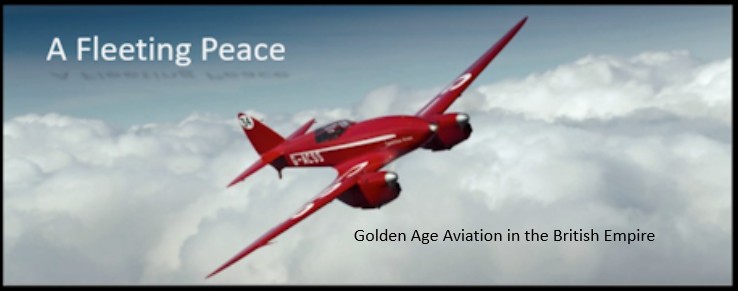
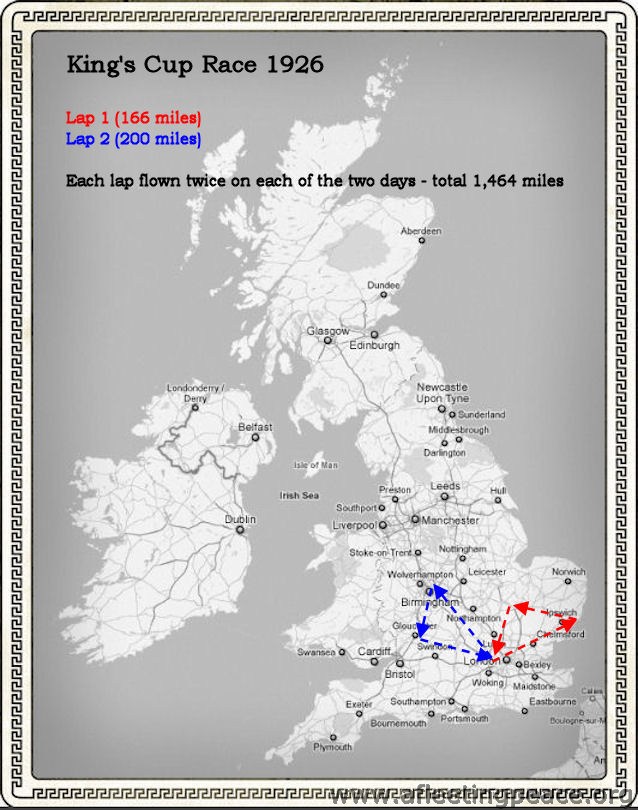

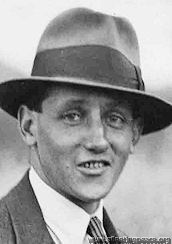
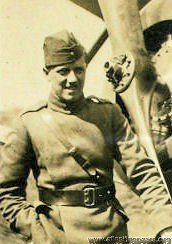
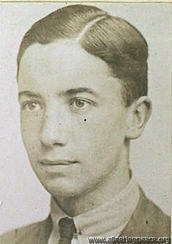
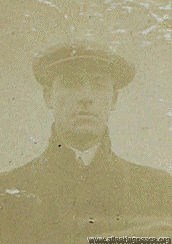
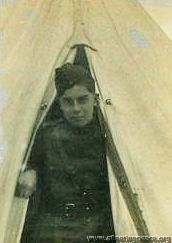
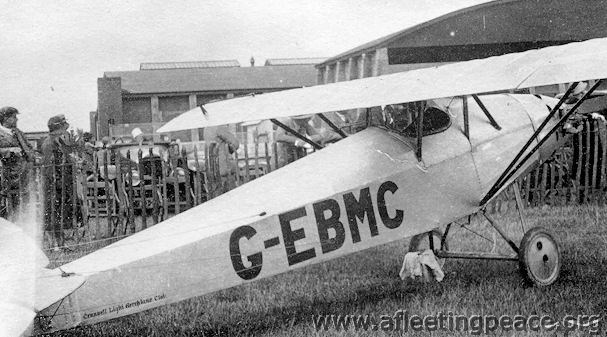
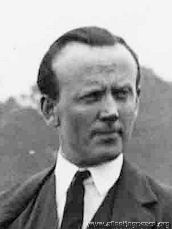
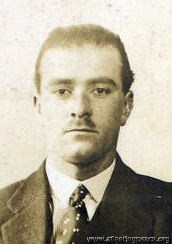
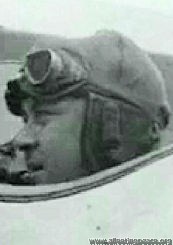
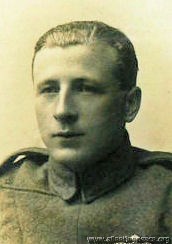
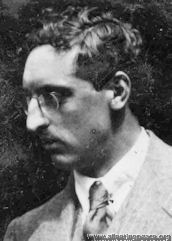
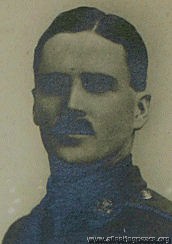
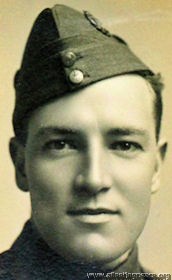
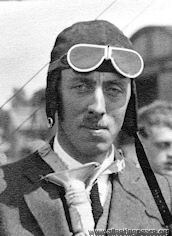
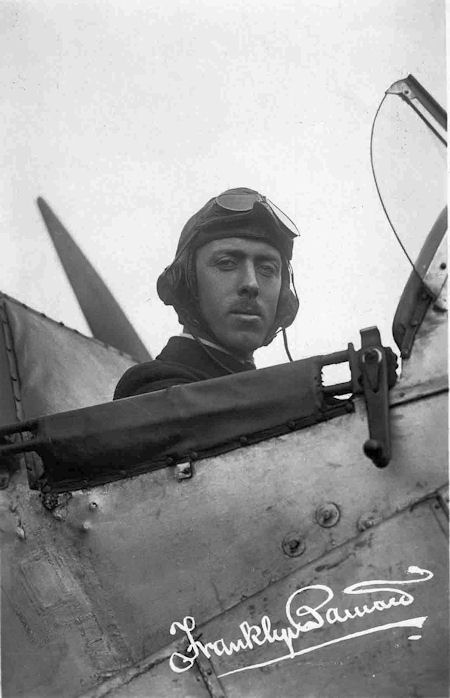
 photo: 1916, when a 2nd Lieutenant in the RFC, aged 23
photo: 1916, when a 2nd Lieutenant in the RFC, aged 23 in 1926
in 1926 photo: 1930, aged 33
photo: 1930, aged 33


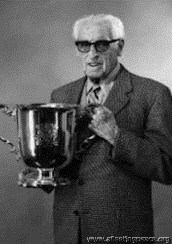 photo: 1972, holding the King's Cup at the RAF Museum, Hendon, aged 78
photo: 1972, holding the King's Cup at the RAF Museum, Hendon, aged 78 1911, aged 29
1911, aged 29 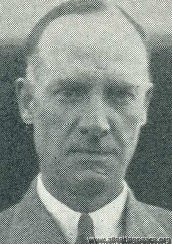 1936, aged 54
1936, aged 54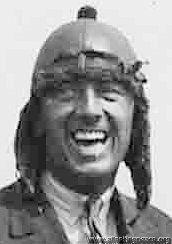 1928, aged 31
1928, aged 31 1916, when a Captain in the Welsh Regt, aged 26
1916, when a Captain in the Welsh Regt, aged 26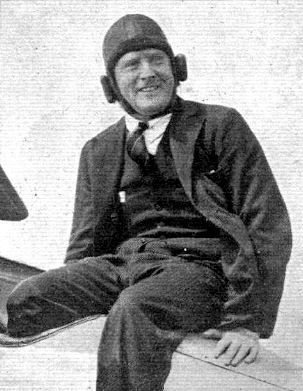 1924
1924 1915, when a Sergeant in the RFC, aged 23
1915, when a Sergeant in the RFC, aged 23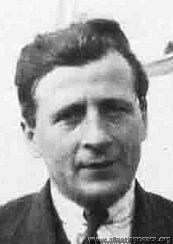 1922, aged 30
1922, aged 30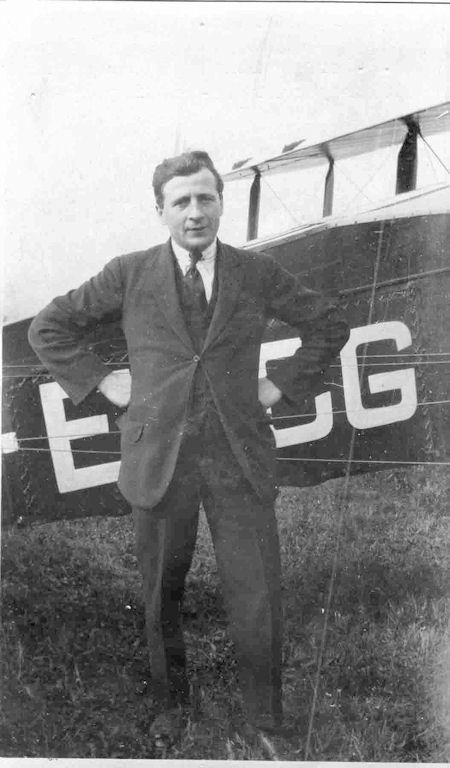 1922
1922 1926
1926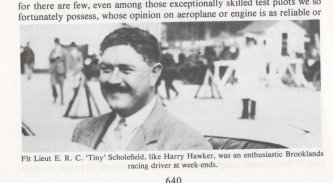 Penrose
Penrose 1930
1930
